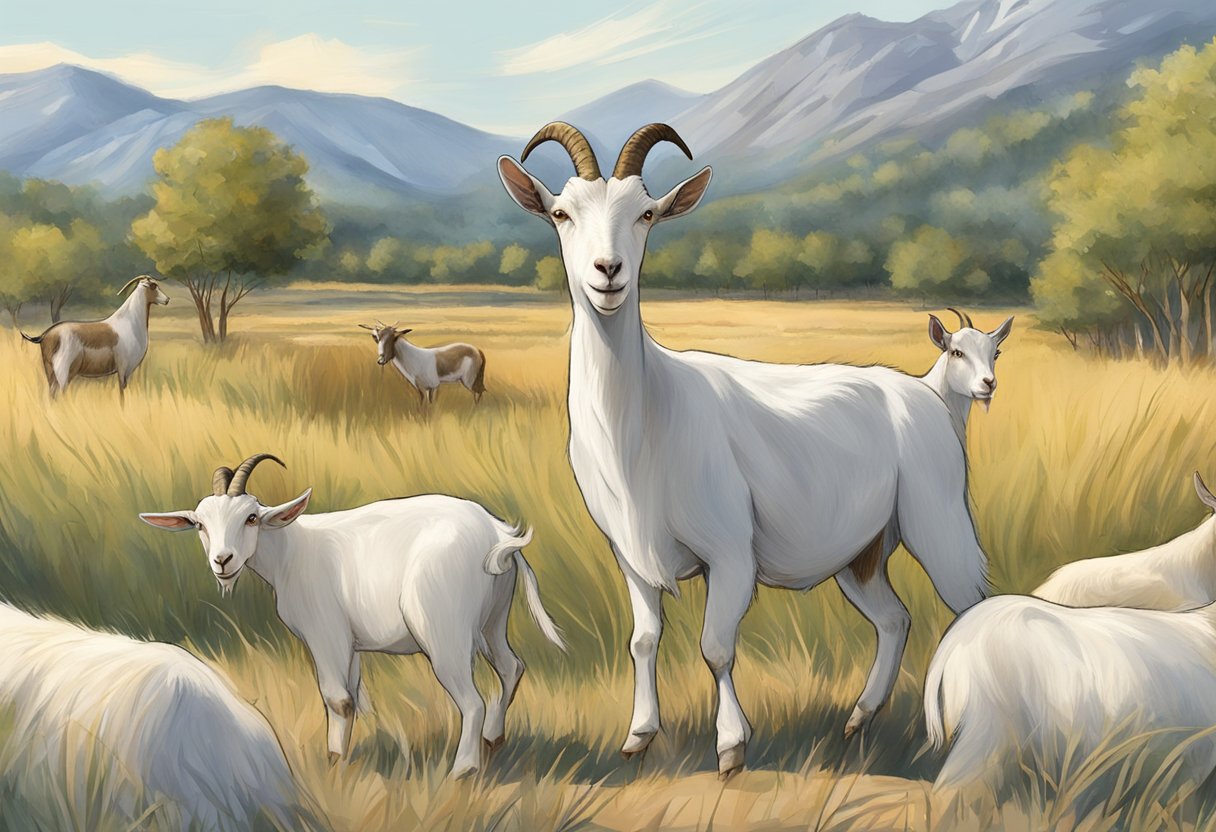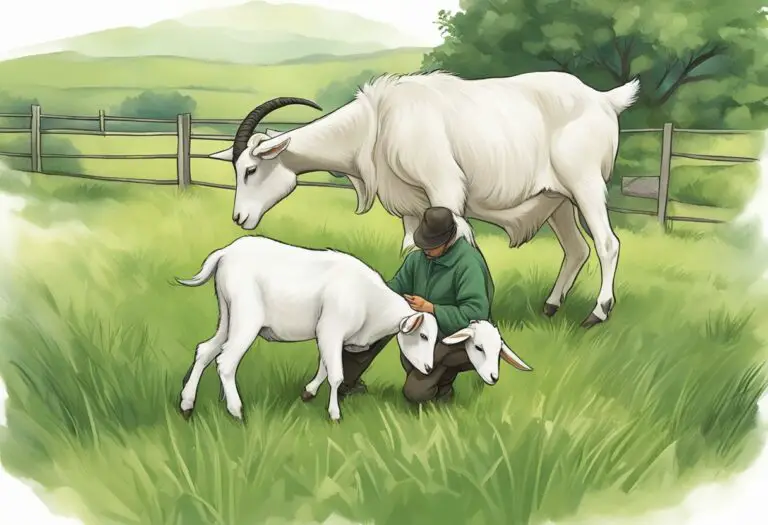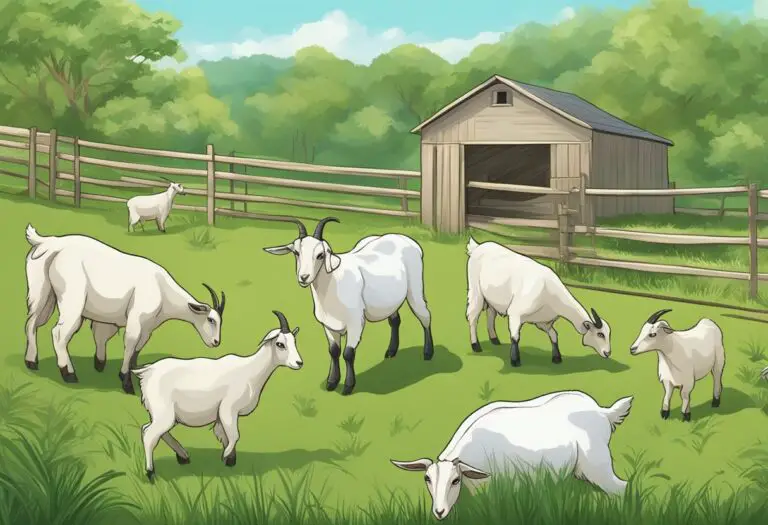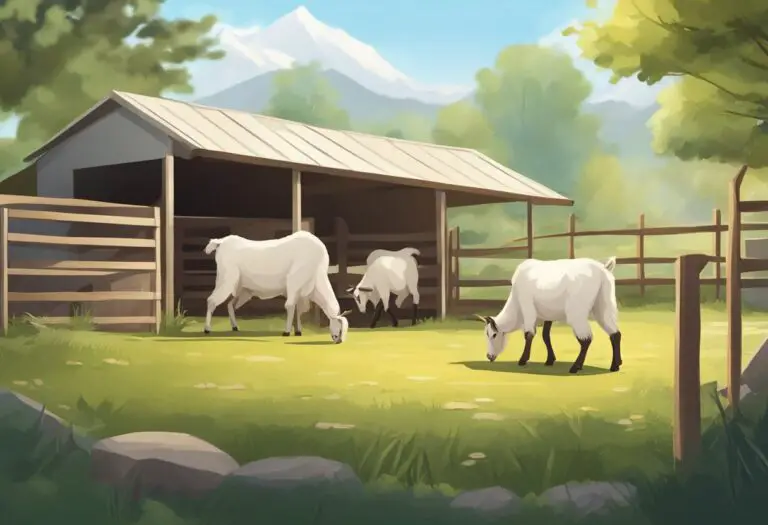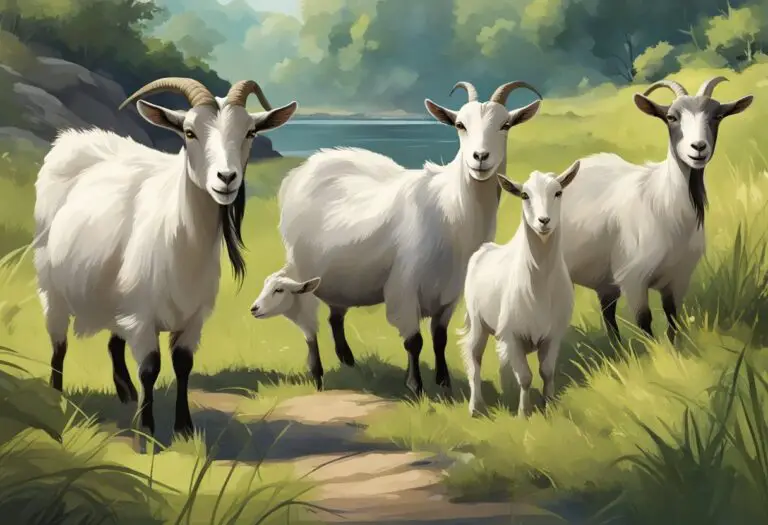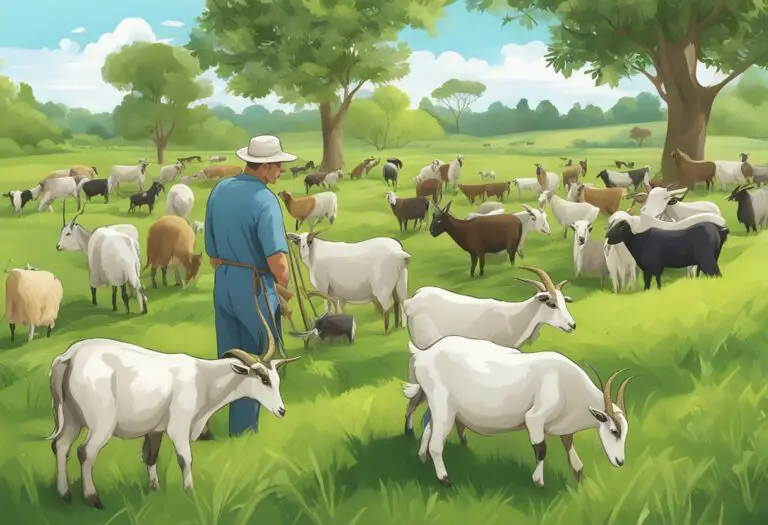When Do Goats Go Into Heat: Understanding the Breeding Cycle of Goats
Goats are fascinating animals that have been domesticated for thousands of years. They are known for their milk, meat, and fiber, but also for their unique reproductive behavior. One of the most important aspects of goat breeding is understanding when goats go into heat.
Female goats, also known as does, go into heat, or estrus, every 18 to 24 days during the breeding season. The breeding season typically begins in the fall and lasts through the winter and into the spring. During this time, does will exhibit physical and behavioral changes that signal they are ready to mate. These changes include restlessness, vocalization, and an increase in urination and tail wagging. Additionally, the doe’s vulva will become swollen and red, and she may exhibit a “standing heat” posture, where she stands still and allows the buck, or male goat, to mount her.
Understanding the Goat Estrous Cycle

The goat estrous cycle refers to the reproductive cycle of female goats. It is the period between two successive estrus or heat periods. The cycle lasts for an average of 21 days, but it can range from 18 to 24 days, depending on the breed and individual goat.
During the estrous cycle, the goat undergoes several hormonal changes that prepare her body for breeding and pregnancy. The cycle is divided into four phases: proestrus, estrus, metestrus, and diestrus.
- Proestrus: This is the period of follicle growth, and it lasts for about 2 to 3 days. The goat’s estrogen levels increase, and she may exhibit signs of restlessness and vocalization.
- Estrus: This is the period of sexual receptivity, and it lasts for about 24 to 48 hours. The goat’s estrogen levels peak, and she may exhibit signs of mounting and standing for other goats.
- Metestrus: This is the period of corpus luteum formation, and it lasts for about 2 to 5 days. The goat’s estrogen levels decrease, and progesterone levels increase.
- Diestrus: This is the period of corpus luteum maintenance, and it lasts for about 14 to 16 days. The goat’s progesterone levels are high, and she may exhibit signs of pregnancy, such as udder development.
Understanding the goat estrous cycle is essential for successful breeding and reproduction. By monitoring the cycle and identifying the signs of heat, goat owners can determine the best time for breeding and increase the chances of successful pregnancy.
Signs of Heat in Goats

Goats are seasonal breeders, which means they only come into heat during certain times of the year. Knowing when your goats are in heat is important if you want to breed them. Here are some signs to look out for:
Behavioral Changes
When a goat is in heat, she may exhibit certain behavioral changes. Some of these changes include:
- Restlessness: A doe in heat may appear restless and agitated. She may pace back and forth and vocalize more than usual.
- Increased appetite: Goats in heat may have an increased appetite and consume more food than usual.
- Mounting behavior: Does in heat may mount other goats or allow themselves to be mounted by other goats.
Physical Signs
In addition to behavioral changes, there are also physical signs that can indicate a goat is in heat. These signs include:
- Swollen vulva: The vulva of a doe in heat may appear swollen and moist.
- Discharge: A doe in heat may have a discharge from her vulva that is clear and stringy.
- Tail wagging: When a doe is in heat, she may wag her tail frequently.
It’s important to note that not all goats exhibit the same signs of heat. Some may be more subtle in their behavior, while others may be more obvious. It’s important to observe your goats closely and look for any changes in behavior or physical signs that may indicate they are in heat.
Breeding Season for Goats

Goats are seasonal breeders, meaning they only go into heat during certain times of the year. The breeding season for goats typically occurs in the fall, with the onset of shorter days triggering hormonal changes in the animals.
During this time, female goats, or does, will come into heat every 18-24 days. They may exhibit signs such as restlessness, vocalization, and discharge from the vulva. Male goats, or bucks, will also become more active and may exhibit aggressive behavior towards other males.
It is important to note that not all goats will go into heat at the same time, and some may cycle earlier or later than others. Additionally, factors such as nutrition and stress can also impact the breeding season for goats.
Farmers and breeders who wish to breed their goats during this time should closely monitor their animals and take note of any signs of heat. They may also consider using methods such as artificial insemination or controlled breeding to ensure successful mating.
Factors Affecting Goat Heat Cycles

Goats are seasonal breeders, and their heat cycles are influenced by various factors. Understanding these factors is crucial for goat farmers to manage their breeding programs effectively. Here are some of the factors that affect goat heat cycles:
Breed Variations
Different goat breeds have different breeding patterns. Some breeds are seasonal breeders, while others can breed throughout the year. For example, dairy breeds such as Saanen and Alpine goats are known to have longer breeding seasons than meat breeds such as Boer goats. Additionally, some breeds may have longer or shorter heat cycles than others. It is essential to understand the breeding patterns of the specific breed to manage their breeding program effectively.
Environmental Influences
Environmental factors such as temperature, light, and humidity can affect goat heat cycles. Goats tend to breed during the fall and winter months when the days are shorter. As the days get longer in the spring and summer, their breeding activity decreases. High temperatures and humidity can also impact goat breeding activity negatively. Therefore, it is essential to provide a comfortable environment for goats to maintain their reproductive performance.
Nutritional Impact
Nutrition plays a significant role in goat breeding activity. Goats require a well-balanced diet to maintain their reproductive performance. A diet deficient in essential nutrients such as protein, minerals, and vitamins can lead to poor breeding performance. Additionally, overfeeding can also negatively impact goat breeding activity. Therefore, it is essential to provide goats with a balanced diet that meets their nutritional requirements.
In conclusion, goat heat cycles are affected by various factors such as breed variations, environmental influences, and nutritional impact. Understanding these factors is crucial for goat farmers to manage their breeding programs effectively. By providing a comfortable environment and a well-balanced diet, farmers can ensure that their goats maintain their reproductive performance throughout the breeding season.
Managing Goats During Breeding Season

Housing Considerations
During the breeding season, it is important to provide goats with adequate housing to ensure their health and safety. The housing should be clean, dry, and well-ventilated. A lack of ventilation can lead to respiratory problems and an increase in the spread of diseases. Additionally, the housing should be spacious enough to accommodate the goats, as overcrowding can cause stress and lead to aggressive behavior.
It is also important to ensure that the housing is secure, as goats can be very curious and may try to escape. The fencing should be sturdy and tall enough to prevent the goats from jumping over it. It is also recommended to have a separate area for breeding, as this can help to prevent accidental breeding and ensure that the goats are properly supervised during the process.
Breeding Management
Breeding management is a crucial aspect of goat breeding. It is important to ensure that the goats are healthy and in good condition before breeding. This includes providing them with adequate nutrition, vaccinations, and deworming.
It is also important to monitor the goats for signs of heat, which is when the female goats are most fertile. Signs of heat include restlessness, frequent urination, and a swollen vulva. Once the goats are in heat, they should be paired with a buck for breeding.
It is recommended to keep a breeding record to keep track of breeding dates, the buck used, and the expected due date. This can help to ensure that the goats are properly managed and that any potential problems are identified and addressed promptly.
In conclusion, managing goats during the breeding season requires careful attention to housing considerations and breeding management. By providing goats with adequate housing and monitoring their health and breeding behavior, breeders can ensure the health and well-being of their goats and produce healthy offspring.
Detecting Pregnancy in Goats

Goat owners who want to breed their goats must learn how to detect pregnancy. Knowing if a goat is pregnant or not is important for proper care and management. Here are some methods for detecting pregnancy in goats:
Physical Observation
Physical observation is the most common method for detecting pregnancy in goats. As the gestation period progresses, the goat’s belly will gradually enlarge, and the udder will start to fill. However, this method is not always reliable, especially for first-time breeders or goats with a small udder.
Rectal Palpation
Rectal palpation is a more reliable method for detecting pregnancy in goats. A veterinarian can perform this procedure by inserting a gloved hand into the goat’s rectum and feeling for the presence of a fetus. This method is most effective after 40-45 days of gestation.
Ultrasound
Ultrasound is another reliable method for detecting pregnancy in goats. An ultrasound machine uses high-frequency sound waves to create an image of the fetus inside the goat’s uterus. This method is most effective after 25-30 days of gestation.
Blood Test
A blood test can also be used to detect pregnancy in goats. This method measures the level of pregnancy-specific hormones in the goat’s blood. However, this method is less reliable and more expensive than the other methods.
In conclusion, detecting pregnancy in goats is important for proper care and management. Physical observation, rectal palpation, ultrasound, and blood tests are all methods that can be used to detect pregnancy in goats. Goat owners should choose the method that works best for them and their goats.
Care of Goats Post-Breeding

After successful breeding, the goat should be monitored for pregnancy. The gestation period for goats is approximately 150 days. During this time, it is important to provide the goat with proper nutrition and care to ensure a healthy pregnancy.
Here are some tips for caring for goats post-breeding:
- Provide a balanced diet: The goat should be fed a balanced diet that includes hay, grains, and minerals. The diet should be adjusted to meet the goat’s changing nutritional needs as the pregnancy progresses.
- Provide adequate shelter: The goat should be provided with a clean, dry, and well-ventilated shelter. The shelter should be large enough to accommodate the goat comfortably and should be free from drafts.
- Monitor the goat’s health: The goat should be monitored for any signs of illness or distress. If the goat shows any signs of illness, a veterinarian should be consulted immediately.
- Provide regular exercise: The goat should be provided with regular exercise to help maintain muscle tone and prevent obesity. However, excessive exercise should be avoided, especially in the later stages of pregnancy.
- Prepare for kidding: As the due date approaches, the goat should be monitored closely for signs of labor. A clean and dry area should be prepared for kidding, and a birthing kit should be assembled.
By following these tips, goat owners can help ensure a healthy pregnancy and successful kidding.

